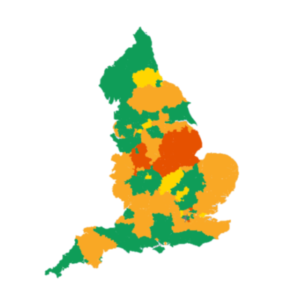Child vision screening 2019 – services are available but still work to do!
Orthoptic-led child vision screening aims to pick up amblyopia (commonly known as “lazy eye”), where the vision in one or both eyes does not develop properly. It is estimated that 1 in 50 children will develop this condition. Often younger children are unaware there is anything wrong with their vision, as they have grown up with and become used to it. If undetected, the condition can result in lifelong and irreversible reduced vision in the affected eye.
A Freedom of Information (FOI) in request in 2019 by the British and Irish Orthoptic Society (BIOS), on behalf of the Clinical Council for Eye Health Commissioning (CCEHC) shows that some form of vision screening is currently available in 94% of local authority areas in England, commissioned either by the Local Authority (LA) or by the local Clinical Commissioning Group (CCG).
However, there are variations in the delivery and quality assurance of vision screening services with only 47% of local authority areas fully compliant with service specifications recommended by Public Health England (PHE). 65% of areas providing the service had some processes in place for monitoring uptake of screening.
Where services do exist, some responses indicate they may be vulnerable to changing priorities and funding cuts, with six LAs reporting that their services were currently being reviewed, with the potential for them to be decommissioned.
Commenting on the findings:
Alison Bruce, co-lead of the vision screening clinical advisory group of BIOS said: “Screening to detect reduced vision at school entry should be available to all children no matter their socio-economic or ethnic background. It provides the opportunity to treat visual deficits that can impact on future life chances.”
Parul Desai Chair CCEHC and Veronica Greenwood Chair BIOS – “Given the current financial constraints, the CCEHC welcomes the wider availability of child vision screening services in England. The focus should now be on ensuring that services compliant with PHE specifications are provided in all areas to address any disparities in service availability, quality and outcomes.”
- You can read the full report here.
- BIOS have created an interactive map, presenting the current level of service availability, which can be accessed here.
- Free NHS-funded sight tests are available at all Opticians (primary care optical practice) for children under 16 and for young people under 19 in full-time education. https://www.nhs.uk/using-the-nhs/help-with-health-costs/free-nhs-eye-tests-and-optical-vouchers/
